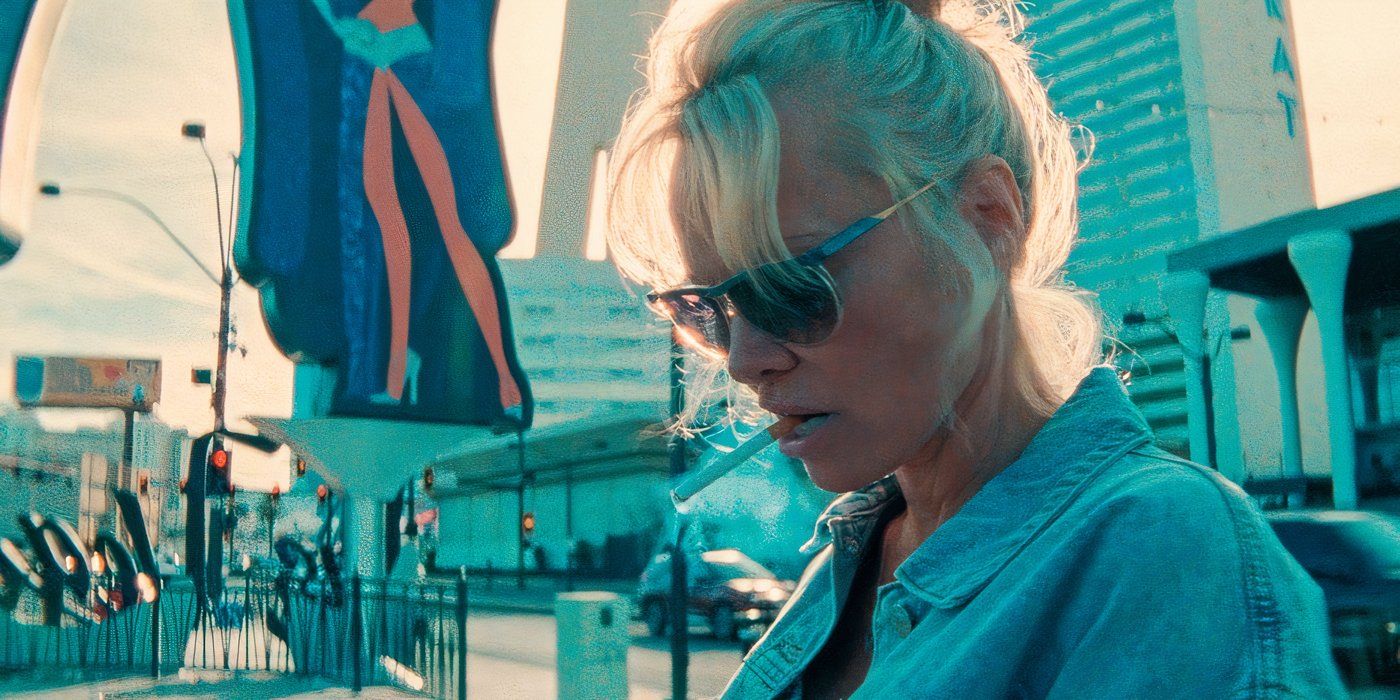Entertainers – true entertainers, the ones that command the stage with sheer force of will – have long been a dying breed, especially in Las Vegas. As the town has become a debauched Disneyland, there’s less emphasis on Show Business and more on merchandise, celebrity, and excess. Pamela Anderson’s Shelley is facing this slow death head on in The Last Showgirl when her long-running Vegas show Le Razzle Dazzle is set to close and she’s sent into an existential crisis.
Le Razzle Dazzle is the last of its era, the kind of show where the women wear elaborate sequined costumes bejeweled to the heavens. Shelley is the longest-serving member of the show, a mentor of sorts to its younger dancers, including two played by Kiernan Shipka and Brenda Song. Jamie Lee Curtis stars as Annette, a former Le Razzle Dazzle showgirl turned casino cocktail waitress, a reminder of what Shelley is on the brink of as the show closes.
Pamela Anderson Gives The Performance Of Her Career In The Last Showgirl
Le Razzle Dazzle is Shelley’s life, so much so that her estranged daughter Hannah went to live with a family friend when she was younger, her mother incapable of handling raising a daughter and starring in a hot Vegas show. It slowly becomes clear, though, that the Le Razzle Dazzle Shelley believes in is something that only exists in her head. Like her entire life, it’s now of a bygone era.
Shelley’s wood-paneled home is distinctly eighties. She still uses a portable cassette player and watches old showgirl performances on a projector in her gaudy living room, dancing along with them. Shelley oozes Vegas, but when she’s faced with what Vegas is now, she’s reticent to accept it.
It’s a crowning moment for Anderson, deservedly so, and an ode to the oft-overlooked showbiz workers that keep Sin City running.
What Vegas is now is explored through Shipka and Song’s characters. When the former auditions for a new show that advertises itself as a hedonist’s paradise, she shows Shelley the audition routine. Anderson’s character is appalled at the overtly sexual nature of it, decrying it as below her and her fellow performers. But when her daughter sees Le Razzle Dazzle for the first time, she confronts Shelley about the show being just as provocative as everything else in Vegas.
Still, Shelley insists Le Razzle Dazzle is different. It’s classy. It’s not like the girls now, who grind on chairs and slap their asses. The dancing Shelley knows is an art, one that she has perfected over decades. She can’t face the truth that not only has Vegas morphed into something new, but that she actively played a role in its evolution, for better and worse.
As this truth dawns on her, it’s heartbreaking to watch Anderson’s character reckon with the life she chose for herself, even as she remains steadfast in her love of the craft. As Shelley reexamines her life, we see her attempt to reconnect with her daughter and figure out what her role in Le Razzle Dazzle really means to her after all these years.
That meaning may lie partially in Hannah, played delicately by Lourd, who is studying to be a photographer. When she tells Shelley, who she calls by her first name, that her adoptive mother insists she be a graphic designer instead, Shelley pushes back on this. It’s easier to follow your dreams, she says, than to do something you hate every day. Shelley doesn’t want to do something she hates every day – she wants to dance.
Throughout The Last Showgirl, director Gia Coppola shows Shelley in empty parts of Vegas, smoking cigarettes or spinning around to music we can’t hear. The daylight is muted, the neon losing its luster. When she’s not shooting the Vegas skyline from afar, Coppola hones in on the faces of her actors as they watch the world around them transform into shapes they don’t recognize.
Each actor brings something special to the film. Dave Bautista is subtly affecting as Shelley’s ex (also Hannah’s father), while Curtis is fearless and hysterical as Annette. It’s the relationship between Shelley and Shipka and Song’s characters that hits the hardest, though. Despite serving as a mother figure to them, it’s a transient role, one that shifts between them.
At one point, Shelley is incapable of being there for Shipka’s character. At another, Song’s must intervene when Shelley is at her lowest. Shelley pushes those who love her away. Contrasted against her relationship with Hannah, which she so desperately wants to work, it’s clear Shelley is still learning how to take of herself before anyone else.
The Last Showgirl isn’t perfect – it’s melodramatic by design, and it wears its heart on its sleeve. But Anderson’s raw and unfiltered performance, one clearly tailor-made for her, makes up for the film’s weaker elements, as does the chemistry between the cast. It’s a crowning moment for Anderson, deservedly so, and an ode to the oft-overlooked showbiz workers that keep Sin City running.
The Last Showgirl premiered at the 2024 Toronto International Film Festival. The film is 85 minutes long and not yet rated.

